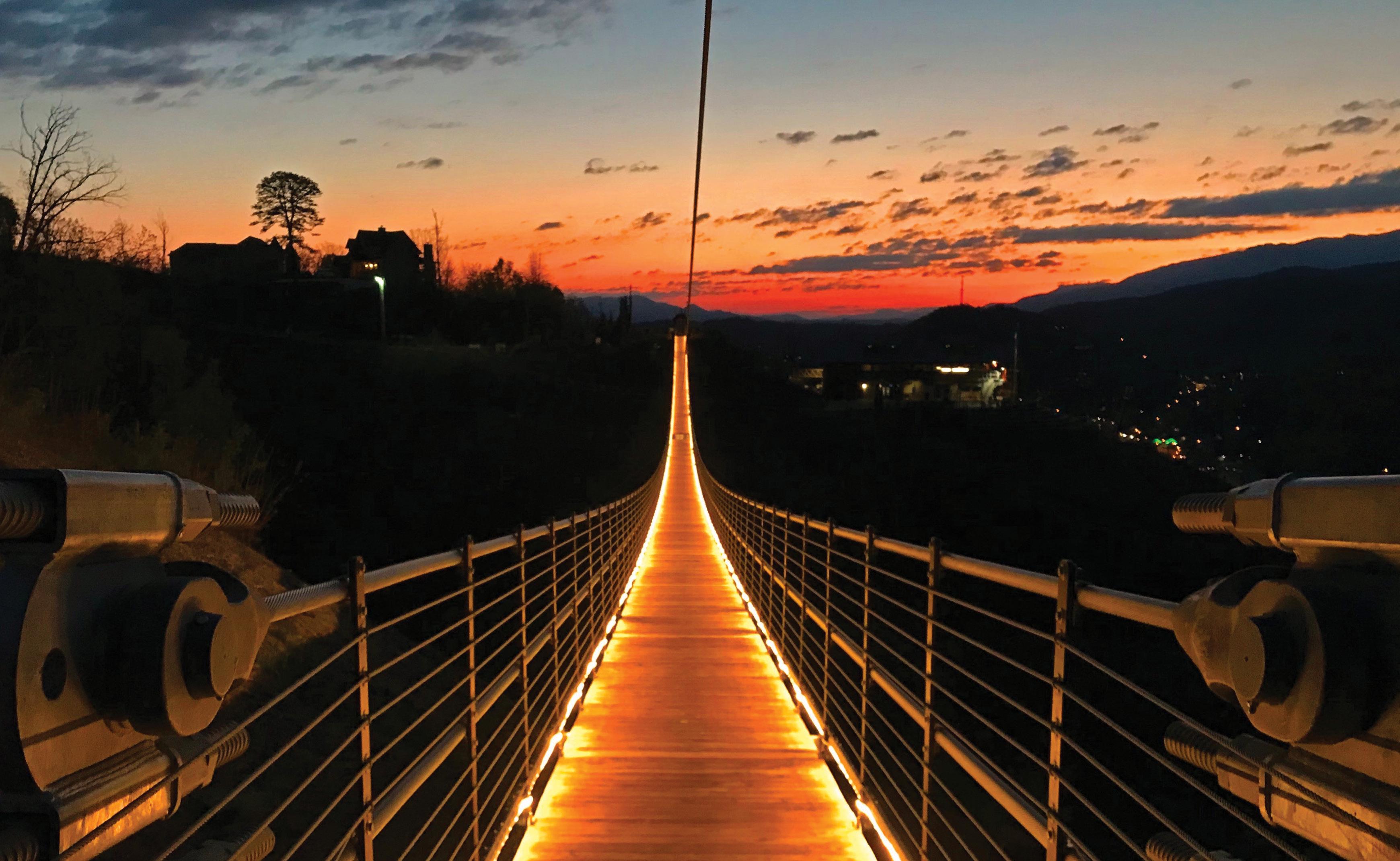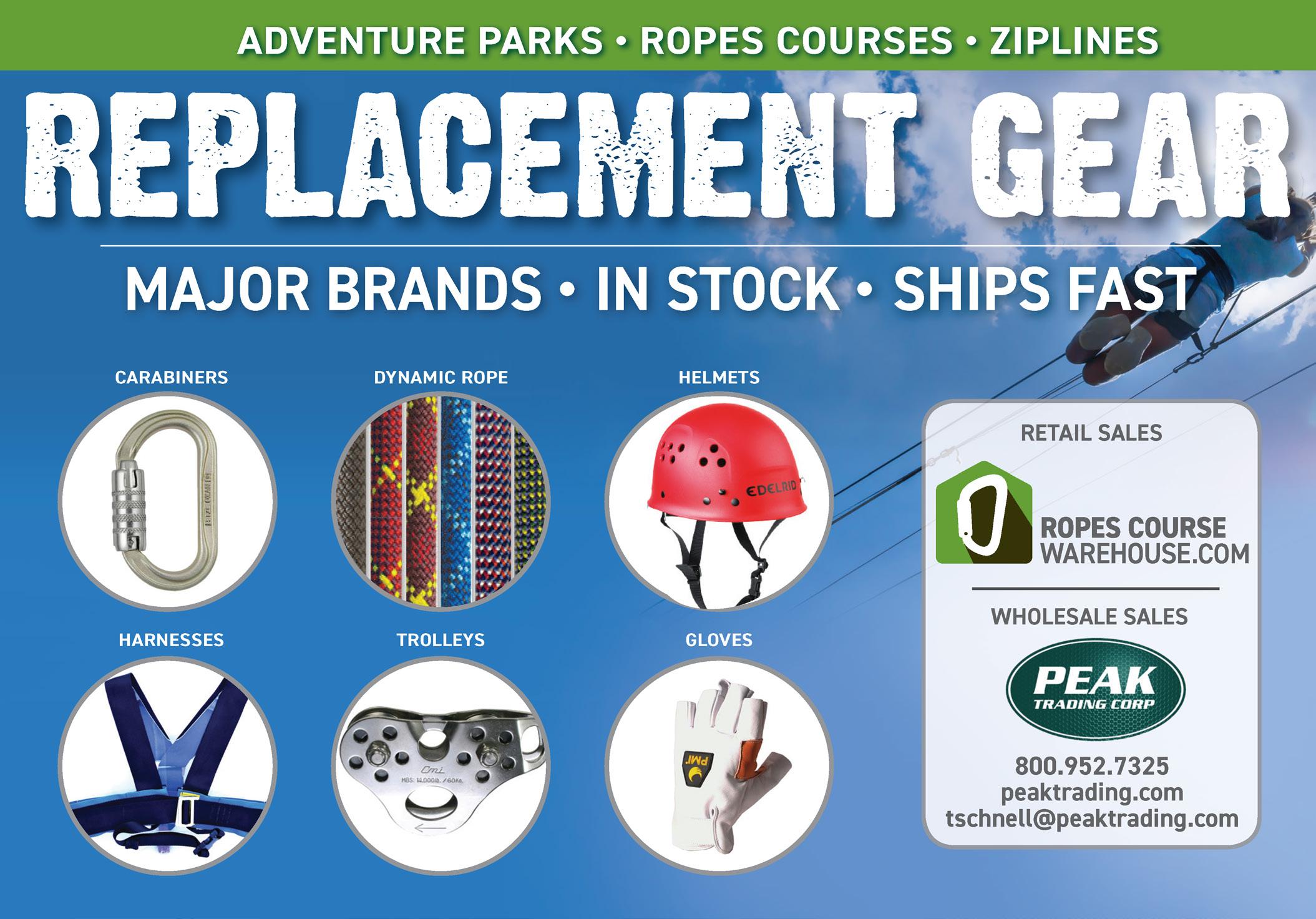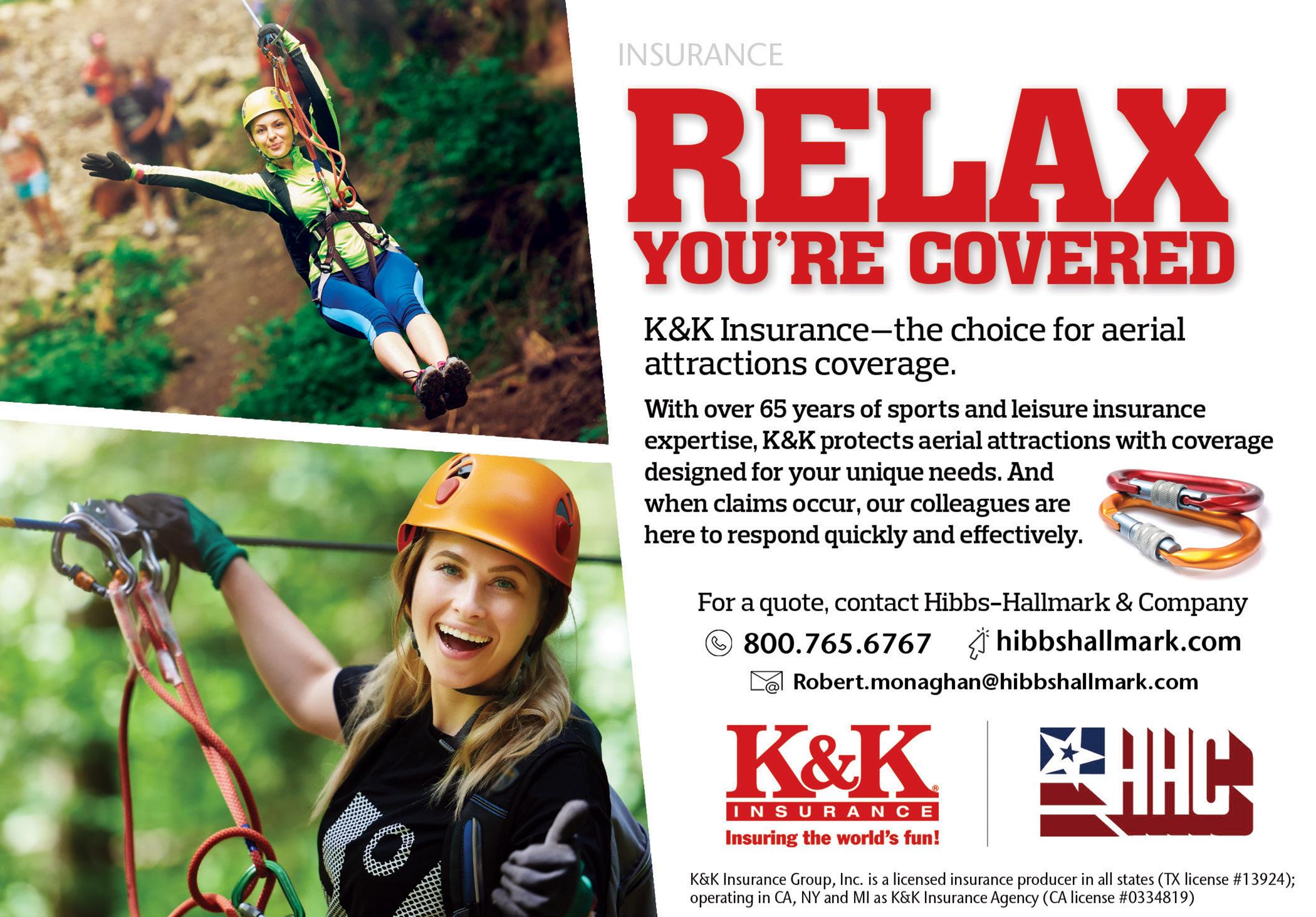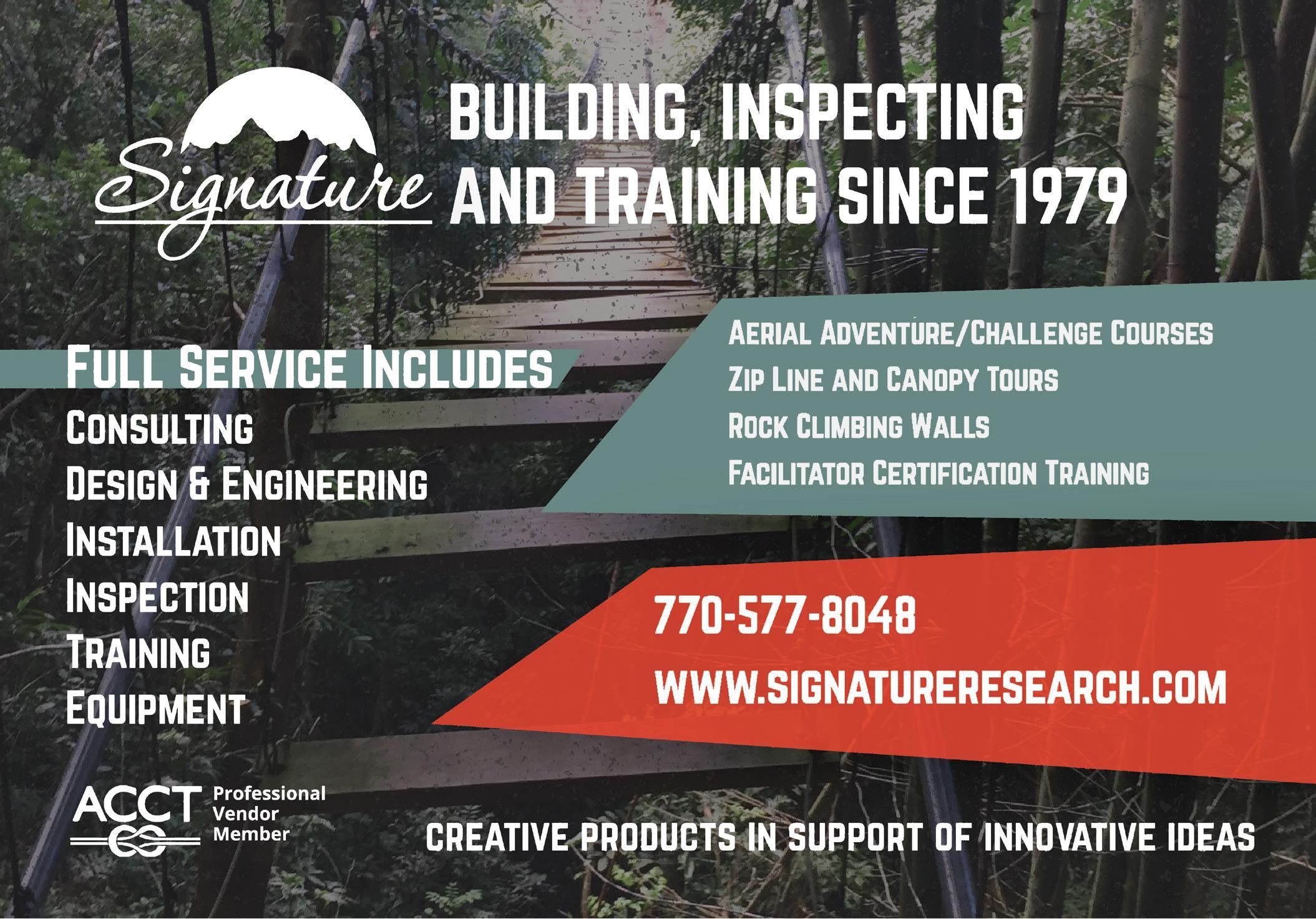
9 minute read
THE ROAD TO RECOVERY
Transition from COVID-19 crisis management to recovery by building your brand community, from the local market out.
BY ANDREW BETHUNE, Director of Strategy, Origin
Advertisement
If your responsibilities include marketing, and you’re feeling paralyzed by the uncertainty gripping the aerial adventure industry in the midst of the COVID-19 crisis, you’re in good company. The crystal balls of even the most seasoned marketers are clouded. While each day reveals more information, it also raises more questions about how to transition our marketing from crisis management to business recovery.
Little about the future is certain, but it’s clear that travel is one industry that will take the longest to recover. There is a marketing strategy to work with this reality, though: building a brand community from the local market out.
TRAVEL: THE PATH FROM CRISIS TO RECOVERY
The business world is full of predictions for what an eventual COVID-19 recovery might look like, yet many share a number of similarities. Travel industry research and insights company Arival (www.arival.travel) is typical of many forecasters, and predicts travel will see four phases to recovery:
1. Lockdown. The initial phase, lasting anywhere from two to four months in most places. In April, when most states implemented stay-at-home orders, travel demand was down to almost zero, at less than 1 percent of 2019 numbers.
2. Easing. A gradual softening of social distancing measures and travel restrictions, limited tourism re-openings, and a slow rebuilding of travel-related businesses. This began in some states in May, and could last anywhere from four to nine months. Arival anticipates demand will grow to anywhere from 5 to 40 percent of 2019 numbers.
3. Returning. With removal of all significant travel restrictions, widespread growth appears as economies recover. This phase could begin any time between this fall and spring 2021, possibly lasting until spring 2022. Travel reaches 40 to 70 percent of 2019 numbers. COVID travel behavior is likely to occur by spring of 2021, in the optimistic scenario, and as late as summer of 2022 in the pessimistic view. In this period, demand is forecasted to recover to 70 to 90 percent of 2019 numbers.
4. Recovery. A return to “normal” pre- COVID travel behavior is likely to occur by spring of 2021, in the optimistic scenario, and as late as summer of 2022 in the pessimistic view. In this period, demand is forecasted to recover to 70 to 90 percent of 2019 numbers.
Will the aerial adventure industry follow the broader travel industry? Following the Great Recession in 2008—the most recent, and somewhat comparable shock—some sectors of travel and tourism rebounded more quickly than others. This time around, though, the coronavirus effect will be layered on top of the economic downturn and recovery. Regardless, local, drive-up traffic is likely to return first.
MOVING FORWARD
For those of us in marketing, transitioning from our locked-down state into the easing phase is upon us. During this phase, it is realistic for many operations to expect a significant change both in who we see visiting and how they visit, as people are likely to remain closer to home.
Operations that currently serve a local or regional audience with limited ancillary services may maintain much of their current customer base and see a faster return to “normal.” Operations in destination areas with significant tourism infrastructure and a focus on longhaul guests will face larger challenges, though, as it’s reasonable to expect more day visits from frugal local and regional customers and fewer destination guests in a vacation-spending mindset.
THE EASING PHASE
Start by building your brand community. During the easing phase, the question we should be asking ourselves is, “What marketing strategies can we implement that could tap our local and regional customers?”
For many aerial adventure businesses, the focus on this customer may feel like business as usual. For others, it might require a whole-scale shift. Regardless, a business as usual approach to marketing isn’t appropriate.
Build the brand locally. A more appropriate focus—one that aligns both the needs of the business with the mindset of consumers—is to rebuild a strong, engaged community of local and regional brand enthusiasts who also represent the best potential for nearterm revenue. Why focus on building community first? In times of crisis, it’s a natural human reaction to focus on family and community. Like it or not, humans are instinctively tribal creatures (read author Sebastian Junger’s great book, “Tribe”), and challenging times stand to emphasize our tribal nature. We seek to surround ourselves with people that share our values, our ideals, and our common interests.
Brands are as much a part of our “tribes” as people are. Just as members of a community expect their fellow citizens to act in alignment with their values and promote the greater good, consumers expect brands to do the same. People will choose the brands they buy—or the aerial adventure attractions they choose to visit postCOVID—based on how that brand fits into their “community.”
In addition, a focus on brand building is timeless and futureproof. Regardless of how adventure parks navigate the path to recovery, brand messaging will always be relevant and appropriate. In this time of recovery and community building, brands must look inward and focus on their brand strategy to guide decision making, and then outwardly communicate their values and purpose in ways that align with the sentiment of the times. Doing so will help to cultivate deeper, more meaningful relationships with customers.
Tactical or conversion-oriented messaging might not be.
In this time of recovery and community building, brands must look inward and focus on their brand strategy to guide decision making, and then outwardly communicate their values and purpose in ways that align with the sentiment of the times. Doing so will help to cultivate deeper, more meaningful relationships with customers.
Time to reset? The current situation offers up a unique opportunity to pause and hit “reset” on how we market and who we market to.
• For operations with little history of brand marketing and/or with a limited existing community of loyal brand enthusiasts, this may mean looking for ways to build a brand with the local and regional customer.
• For operations that have been neglecting brand marketing to their existing local and regional community, or that have lower brand sentiment with those customers, this may be an opportunity to re-engage that market.
• For operations that have strong existing brand communities in their local and regional customers, congratulations! Now is the time to double down and foster or celebrate that community more than ever.

CONTENT AND CREATIVITY
Content is one of the best tools we have as marketers to build brand community. It naturally allows for deeper engagement and storytelling, making it a more natural tool for communicating values and creating more meaningful connections with consumers than traditional, interruptive forms of advertising (display, pre-roll, etc.).
Pair this with the fact that the distribution of content can be less costly and more targeted, and you have an approach to marketing during the crisis that isn’t likely to break the bank or Creativity rules! As valuable as content is, creativity will drive its success and its ability to reach and engage your audience. During the pandemic, we’ve all seen the flood of creativity that locking people in their homes has unleashed. (What’s your favorite meme so far?) Creative ideas that tap into the current zeitgeist and resonate with customers based on this shared human experience are rising to the top.
This doesn’t automatically require major creative and production resources, either. Some of the best branded content we’ve seen this spring has obviously been produced quickly, with simple production techniques. Take Ford’s COVID response ads, for example (search “Ford built to lend a hand”). In mid-March, Ford pulled all its high-production-value national vehicle advertising, pivoting to a brand message around the company’s support for those impacted by the pandemic. The ads used simple archival footage and basic text and graphics. It’s the type of creative that perfectly captures the brand’s values and the mood of the moment, while requiring minimal work to execute.
Smith Optics took a simple approach to brand-building, modifying its “Pursue Your Thrill” tagline to create a #PursueYourChill user-generated content campaign. This invited athletes and enthusiasts to share how they are staying healthy and safe—physically and mentally—so that they can pursue their thrill again when the time is right.
The beauty of such marketing efforts is how they align brands’ values with the current situation. Rather than simply pulling their marketing or shutting down their spend, smart marketers are using this time to make their brand communities stronger than ever.
THEMES FOR BRANDS
So, what creative themes can you and your team play with to align your brand’s values with the mood of the current times?

History and nature. Can you play with the heritage and/or natural features of your park—building on the nostalgia many people are feeling right now for the past and their desire to be outdoors—to communicate your values and purpose? Can you look back at where you came from to express your brand’s reason for being? Can you highlight nature—flora, fauna, animals, geology, etc.—to remind people why they should love you as more than just an exciting activity?
Charity. Has your brand pivoted resources or energy into supporting local charities or healthcare providers during the pandemic? Can you create content to tell the story of why and how your brand took these actions?
Community. Can you tap into your existing customers and brand enthusiasts to share user-generated content? Many of us are longing to relive the memories of better times when we could travel freely with our friends and loved ones. If your brand values revolve around connection, belonging, or shared mem ories, can you create a digital way for people to share these memories and tell their stories about what the brand means to them?
For brands looking to build community where there isn’t one currently, or for brands looking to rebuild community with an audience that has become disenfranchised, can you lean into brand ambassadors? Are there community members with an authentic connection and passion for your brand, and who also have influence in the market you are looking to tap into? Can you use these ambassadors to re-engage consumers who may otherwise overlook your brand, and remind them of all there is to love about you?
TURNING CHALLENGE INTO OPPORTUNITY
While there’s no doubt that the COVID-19 pandemic presents an unprecedented challenge for humanity and the aerial adventure industry, this too shall pass. How we weather the dark times is what defines us, both as people and as brands.
This period of transition from crisis management to recovery presents a unique opportunity to pause and rethink your marketing in a way that may have seemed impossible in the past. How we as marketers treat this opportunity—while finding the balance to not be opportunistic—may well define how successfully we are able to emerge from this crisis as an industry.










